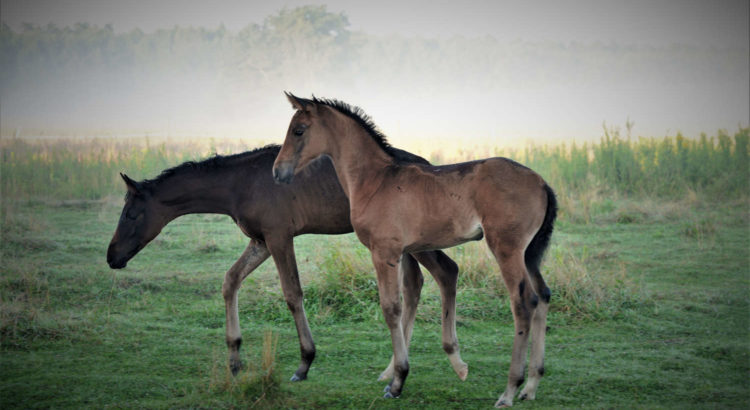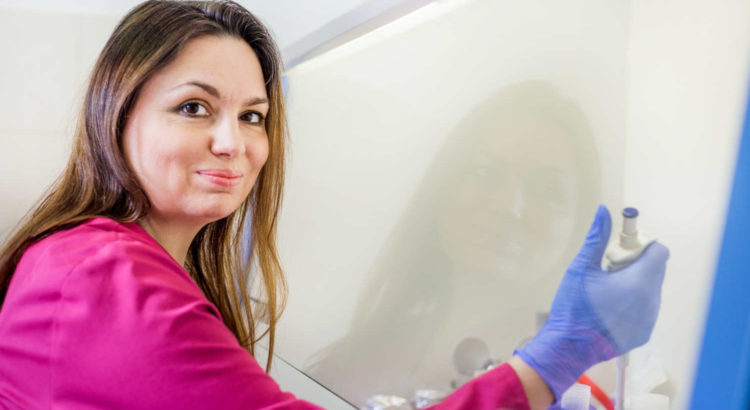
Istniejące metody przechowywania nasienia ryb nie są doskonałe. Naukowcy z naszego Instytutu, dr hab. Radosław Kowalski i mgr Agnieszka Brzyszcz, stworzyli specjalne rozrzedzalniki, które znacznie usprawnią ten proces, jednocześnie chroniąc same plemniki.
Zmiany klimatyczne doprowadziły do desynchronizacji tarła samców i samic. Obecnie często zdarza się, że samce dojrzewają dużo wcześniej od samic, stąd konieczne są metody przechowywania nasienia wykorzystywanego do zapłodnienia. Naukowcy z naszego Instytutu pod kierunkiem dr hab inż. Radosława Kowalskiego stworzyli specjalne bufory dla karpi i pstrągów, które mogą usprawnić ten proces. Projekt „Sposób przechowywania nasienia ryb w warunkach produkcyjnych” został zrealizowany w ramach programu Inkubator Innowacyjności 4.0.
Dr hab. inż. Radosława Kowalskiego zapytaliśmy o znaczenie jego badań i tego, co mogą zmienić wśród hodowców ryb.
Jak obecnie jest przechowywane nasienie ryb?
Dr hab. inż. Radosław Kowalski: W praktyce wylęgarniczej nasienie pobrane bezpośrednio od ryby przechowuje się w pojemniku lub worku z tlenem – metody takie sprawdzają się w ciągu kilku godzin od pobrania. Przechowywanie nasienia nierozrzedzonego niesie ze sobą ryzyko, że jego jakość spadnie natychmiast, ponieważ istnieje niebezpieczeństwo zanieczyszczenia moczem. Rybie nasienie ma tę właściwość, że aktywuje je niskie ciśnienie osmotyczne, więc może być przypadkowo aktywowane przez mocz. Długotrwałe przechowywanie nasienia z tlenem także nie jest dobre – nasze badania wykazały, że zmiany oksydacyjne niosą ze sobą więcej szkód niż korzyści.
Co można zrobić, by istniejące metody poprawić?
RK: Opracowaliśmy specjalne płyny immobilizujące do przechowywania. Jeśli w trakcie pozyskiwania nasienia, zostanie ono zanieczyszczone moczem, to po rozrzedzeniu w płynie immobilizującym ruch plemników nie zostanie aktywowany. W sprzyjającym otoczeniu jakie stwarza bufor , plemniki „ładują swoje baterie”, czyli odbudowują zapas energii w postaci ATP, co pozytywnie wpływa na ich ruchliwość. Dzięki rozrzedzalnikom jesteśmy w stanie zregenerować każdego rodzaju plemniki – od 0 do nawet 90% ruchliwych plemników.
Czy taka metoda sprawdza się także na dłuższą metę?
RK: Kiedy przechowujemy nasienie w buforze przez dłuższy czas, to ok. 5 proc. powstałego potomstwa rozwija się w embriony z poważnymi deformacjami, np. wadami serca czy innymi zmianami fizjologicznymi.. Okazało się, że w nasieniu przechowywanym przez długi czas dochodziło do zmian oksydacyjnych w DNA (na poziomie epigenomu), które powodowały trwałe zmiany genetyczne. Stare plemniki mogą odpowiadać za niższą jakość potomstwa, co obserwujemy w całym świecie przyrody.
Czy to starzenie komórkowe można powstrzymać?
RK: W ramach projektu Inkubator Innowacyjności 4.0 zastosowaliśmy dodatki antyoksydantów, które miały chronić plemniki przed zmianami oksydacyjnymi w obrębie materiału genetycznego. Zastosowaliśmy trzy różne antyoksydanty i obserwowaliśmy jak działają – najlepsza okazała się witamina E. Badania prowadziliśmy na dwóch gatunkach najpopularniejszych ryb w Polsce – karpiu i pstrągu tęczowym. Są to dwa skrajne przykłady – pstrąg jest zimnolubną rybą, karp jest ciepłolubny. Pstrąg ma plemniki bardzo odporne na zmiany oksydacyjne genomu, co jest związane z występowaniem u nich protamin jako białek stabilizujących chromatynę. Plemniki karpia są bardziej wrażliwe na te zmiany, gdyż ich genom stabilizowany jest przez mniej wydajne w upakowywaniu DNA, histony.
W naszych badaniach porównywaliśmy różnice w jakości i ruchliwości plemników po wyznaczonym okresie przechowywania – u pstrąga miesiąc, u karpia 2 tygodnie od pozyskania, a także analizowaliśmy jakość potomstwa uzyskanego w wyniku zapłodnienia dokonanego z wykorzystaniem tak przechowywanego nasienia. W obu przypadkach zastosowaliśmy mieszanki antyoksydantów i najlepiej sprawdziła się witamina E.
Co jeszcze jest w buforach?
RK: Skład buforów opatentowany został już w 2014 r. Nie mogę zdradzić stężeń antyoksydantów, ale sam skład podstawowy buforów jest jawny. Najważniejsze substancje to sód i potas. Jest także magnez, wapń i stabilizator pH. Dodatkowo, jako pierwsi na świecie, skład buforów wzbogaciliśmy o zagęszczające polisacharydy (alginiany, karageny i ksantany), co zapobiega sedymentacji grawitacyjnej plemników i w konsekwencji ich opadaniu na dno pojemników. Sedymentacja jest procesem w wyniku którego, już po 48 godzinach może ulec trwałemu uszkodzeniu ponad 90% plemników.
Czy skład buforów można jeszcze ulepszyć?
RK: Antyoksydanty pochodzenia naturalnego pod wpływem różnego pH zmieniają swoją barwę. Moim celem badawczym jest stworzenie dodatków, które kolorem wskazywałyby na zmiany w pH. Chciałbym opracować bufor, który z jednej strony chroniłby plemniki, a z drugiej, poprzez swój kolor, pokazywał, jak bardzo zaawansowane są zmiany starzeniowe plemników. Takie rozwiązanie znacznie ułatwiłoby życie hodowcom ryb, którzy na podstawie zmian koloru mogliby stwierdzić, czy danego nasienia używać, czy nie.
Projekt realizowany w ramach programu „Inkubator Innowacyjności 4.0”, finansowany przez MEIN jest ze środków europejskich w ramach projektu „Wsparcie zarządzania badaniami naukowymi i komercjalizacja wyników prac B+R w jednostkach naukowych i przedsiębiorstwach” w ramach Programu Operacyjnego Inteligentny Rozwój 2014 – 2020 (Działanie 4.4).
Read more



